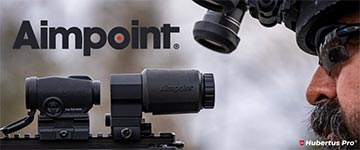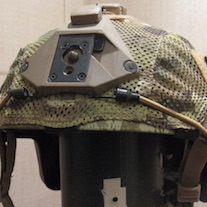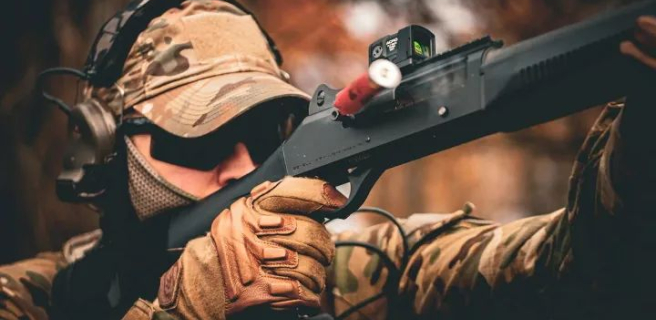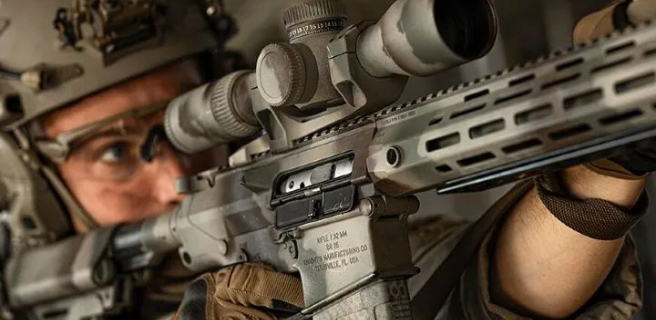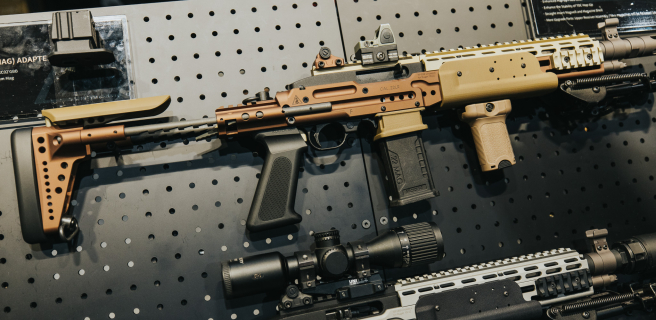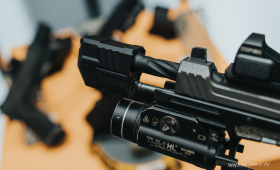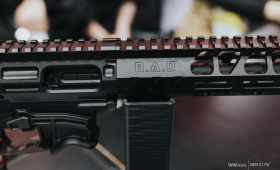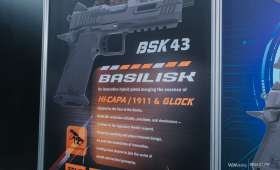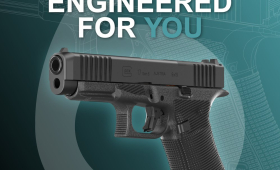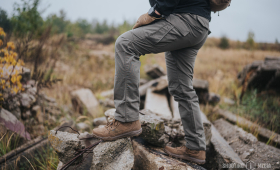This text is a subjective collection of thoughts and observations of the author.
Introduction
The SPECOPS company from Gdynia does not need to introduced to anyone. For many years their products have been a guarantee of quality and ergonomic solutions ... although they also did not avoid mishaps. At this point it is worth referring to the famous "ULPC scandal" (which Szmerglu described in more detail in his text about the previous generation of the ULPC vest), because the current model, with the number "3" in the name, will require some references to its predecessor and problems with which it struggled at that time.

Well, since we are already at the model numbering, it is worth paying attention to the jump in it, from the ULPC-1 right to the ULPC-3. Does it mean that the new vest is actually a two-generation better? More likely, the manufacturer simply wanted to "get in line" with the numbering of its Mundur Bojowy Specops 3 (MBS3) (ang. Specops Combat Uniform).
SPECOPS Ultra-Light Plate Carrier
What exactly is the ULPC? As you can see above, this is an acronym referring primarily to the weight of the vest. And indeed, SPECOPS (probably one of the first in Poland) started a serial "experiment" with laser cutting of glued together layers of laminate ... which also the source of its problems, because it was the peeling off of the material that was the main flaw of the first models of the ULPC and it was (according to the explanations given) one of the reasons for the delay of the preorders. The ULPC-1 vests were seen on the photos of soldiers of the FORMOZA Military Unit (Olive Drab and Coyote Brown versions), and quite recently they could also be seen on photographs depicting SPAP officers (black versions). Information circulating in the Internet also shows that some of vests found their way to the JW GROM. Therefore it is safe to say the they were dedicated to and tested by specialists.

I was "lucky" that I ordered a Coyote version of the ULPC-1, which was one of the few versions that sere sent as part of the preorders but after considerable delays. That's why I am able to refer to what the ULPC prototype version 1 offered when describing the model with the number "3". In fact, the vest was not particularly "thrilling", apart from the laminate, which was prone to fraying at the corners of the cuts, the first row of PALS style cuts on the front flap were not cut all the way through and the payload of the vest itself was also deviating from the given specs. As for the last complaint, its nothing special as the vest is designed as a lightweight ballistic plate carrier for quick, direct operations.
SPECOPS ULPC-3
After this lengthy introduction, it's high time to go to the main subject of this text, i.e. ULPC version 3, according to information from the shop's website, weighing from 400 to 480 g, depending on the variant.

I was looking for this vest for a good year and a half, trying to buy it from the distributor as well as directly from the manufacturer. Unfortunately, these efforts were ill fated and at some point I accepted the fact that it is unavailable outside orders made for uniformed services. The situation changed some time ago, when looking through the site of one of the SPECOPS distributors, I noticed it in two camouflage variants - Multicam and A-TACS FG. My enthusiasm was cooled down a bit the price, so I withheld the purchase and made it only after the store decided decrease it by a fair amount. This is how I came in the possession of a copy in the Multicam camouflage ...
Front panel - the external side
As I mentioned above, my copy was made from a Cordura laminate in the original Crye Precision Multicam camouflage.

The differences between the ULPC-1 and 3 are immediately apparent. The new vest is made of thicker layers of fabric, has been equipped with a large amount of Velcro and looks more aggressively than its predecessor. The basic change, however, concerns the way the ballistic plate is inserted - more on that in a bit.


The upper part of the front panel, apart from the PALS/MOLLE cuts, also consists of a simple Velcro panel based on three rows of velcro straps and ... that's it. You can also see parts of the mounted ballistic plate, which shines through here and there.

The design of ULPC-3 straps is definitely more complicated than what I had to deal with in its predecessor. Here we have laminated layers smoothly joined with soft Velcro, which, apart from the function of adjusting the vertical position of the vest, gives the ability to mount IFF/IR markers , it is first and foremost ... aesthetically designed. At the connection point of the ballistics panel and straps there is a D-Ring, one for each shoulder, while on a large part of the surface of the material, at the height of resting a weapon buttstock, laser incisions in the MOLLE/PALS standard are placed.




Above there is a flap fastening the front and rear panel, which has a stitched laminate fragment with cuts serving as an equivalent of the PALS belt. Unfortunately, the whole part is not flexible or does not have rubber seams (e.g. as in the DA Spitfire), which limits us to the possibility of mounting only a very small pouch or a PTT. On the other hand, there are two loops for a tube from a hydration pack or cables from the radio. Unfortunately, we will not find the comfort pads here, nevertheless, with the overall weight of the entire vest, they are unnecessary. For the desperate, we recommend the purchase of velcro-mounted pillows. Thanks to the velcro-finish straps, products of the competitors should fit without a problem.

Further ahead, in the bottom part of the front panel there is a flap which is the equivalent of the PALS panel in the configuration of 3 rows x 6 cells, hidden beneath the "wings" connecting the cummerbund.

The flap itself is mounted using Velcro flaps, which are inserted through the incisions placed in the front panel of the vest. In addition to visible wings facilitating its opening ...

... there are also two loops of camouflaged tape on it, which can be used, for example, as a mounting point for a carbine.

Front panel - the internal side
The whole "skeletal" design of the vest is very interestingly solved (that is why I will write more about this in the fragment regarding ballistic plates), but I would like to show here what the back part looks like:

What you see is true. The back of the ULPC-3 is hidden under a foam-mesh lining that is attached via a velcro onto the skeleton outer layer. By the way, the ULPC-3 is the first product by SPECOPS I have which has no manufacturer's logo anywhere ...
Rear panel – the external side
A quick look at the back of the vest. It is similar to the front, we have here a separate space for a ballistic plate and other elements:

In the upper part there are 3 rows of sewn Velcro tapes. In contrast to the front, there are more widely spaced. They are sewn on two levels, two on the ballistic plate cover, one below in the upper part.

What are the possible applications? Large identification badges in the case of double velcro, while on a narrower one: IFF/IR markers, possibly a blood group, or a small morale badge or one with a name or surname:

The cummerbund is integrated with the back panel, which means that you should think carefully about the size of the vest you buy. As a curiosity, I will add that the vest was bought in the L size of the ballistic plates, while the label, the only one on the whole vest, sewn into the cummerbund suggests that its size is ... XL.

The Design of side fasteners is based on a pleated laminate sewn into loosely laid rubber. This solution is analogous to the one used in the ULPC-1. After putting the vest on the body and fastening it on the front, the rubber is stretched and fitted to the body of the user - thus also the whole plate carrier "works" with the body. It is worth adding that there is a possibility of mounting pouches on this "harmonica", but this is not a particularly convenient solution.



Rear panel – the internal side
As in the case of the front panel, we have here a foam-mesh lining:

Of course, you can not forget about the drag handle, which comes out from the inside of the panel. This is a drawback, because it tends to curl up and "hide" under the vest when it is worn.

A sample configuration


The ballistics…
Wherever I looked, I saw the information that the vest is designed to work with the SAPI plates, but to tell you the truth, the shape of the cover for the plates made me wonder as, at first glance, I thought that the standard SAPI plates might not fit. After a few attempts (I used M sized SAPI plates - although the vest was bought as L size and the label suggests that it is an XL size), I gave up and ordered a dummy of the Swimmer-Cut plate. After a long wait for the shipment, as soon as I put in the above mentioned replica into the vest, it turned out to be a perfect fit!
The main surprise came when I first started put the plates inside the vest. In fact, taking apart the ballistic plate cover raised my increasingly sincere surprise. It was first time I met with the possibility of, de facto, stripping down a plate carrier completely. Anyway, just look at the photos.




Looking at the design of the vest, you can immediately see the main difference between the old and the new ULPC. In the case of the model designated with the number "1", the shell was in fact a homogeneous design. If we look at the ULPC-3, we immediately notice that the ballistic panels cover is like a three-dimensional "addition", which evidently stands out from the outline of the base part of the vest resting on the body.

By the way, the design of the drag handle was made clearly visible, which runs virtually throughout the entire length of the rear part of the plate carrier, as seen above.
Summary

The summary of this brief description should be considered in several categories:
1. Is this a worthy successor of the ULPC-1?
Definitely yes. This design is "cured" of the ills that plagued the predecessor. After quite intensive use, I did not find traces of laminate sticking or spreading. Nothing is frayed. I also did not notice stitched PALS cells, which happened in my predecessor.
2. Is this a universal design?
Definitely not. It is a vest for short, fast actions. If someone would like to pack 12 magazines, 3L camelback, a camping set and 6 grenades, I think it's better to look for another vest. This is a highly "specialized" equipment designed for a specific job.
3. Can anyone use the ULPC-3? What units can be reenacted with it?
Based on photos: JW Formoza, JW GROM, WR UKS (currently named WR UCS).
4. Is it worth buying?
In my opinion, this is very much an overhyped piece of equipment. I am aware of the complexity of this design, the patents used, the quality of workmanship. Nevertheless, the price close to a half the minimum wage, with such a narrow possibility of use seems disproportionate. A much more universal designs are the Templar TPC/PC or Direct Action Spitfire, which are cheaper than the ULPC-3. Nevertheless, it is a professional and really well made piece of equipment, hence the price is not particularly surprising, although, in the airsoft reality, the potential of this vest may be the over-development of form over the content. Anyway, someone once said: "this is equipment meant for war".




